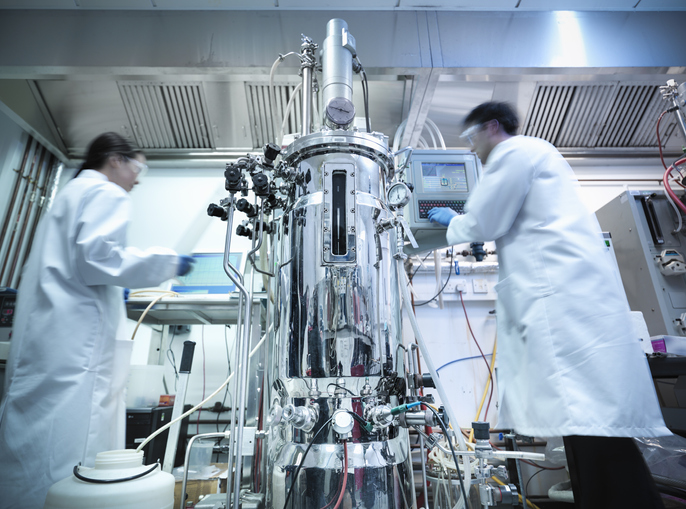The difficulty in separating intracellular products has been a bottleneck in the commercial production of genetically engineered products. Traditional mechanical, chemical, and biological methods have been expensive and have limited efficiency, making the separation and purification of target proteins difficult. Now, however, the combination of phase lysis and salting-out extraction (SOE) resolves those challenges, positioning this new technique as a viable alternative to classical cell disruption and intracellular product recovery techniques.
In a recent paper, Zhi-Long Xiu, PhD, professor of bioengineering, and colleagues at Dalian University of Technology in China, showed the lysis effect of T7 phage on genetically engineered Escherichia coli expressing κ-carrageenase. They found that T7 phage, used as a cell disruption tool, lysed 99.9% of host cells when the ratio of phages to bacteria in culture was 1:1 (multiplicity of infection = 1) and released more than 90% of the enzyme within 90 minutes.
“After phage lysis, 87% of the T7 phase and 71% of the κ-carrageenase could be distributed at the middle and bottom phases, respectively, in an SOE system,” the paper noted.
SOE integrates solid-liquid separation, crude separation, and concentration for biological macromolecules. That system was composed of 16% ammonium sulfate and 20% ethyl acetate. Ultimately, the κ-carrageenase in the bottom phase was salted out by ammonium sulfate, with a 40% yield.
Simultaneous two-product separation
The recovery of κ-carrageenase by the process of ultrasonication followed by centrifugation and salting out was higher (at 57%) than with phage lysis followed by SOE and salting out (at 40%). “However,” Xiu tells GEN, “SOE achieved simultaneous separation of two products under mild conditions, without specialized equipment (ultrasonication and high-speed centrifugation). The recovery could be improved when the two products were further purified.”
The advantages for biomanufacturers, Xiu says, are “cheap, simple, and highly efficient cell disruption by phage lysis rather than by specialized equipment such as bead mill or a high pressure homogenizer, and simultaneous extraction of intracellular products and phase by SOE.” Xiu’s group has used SOE extraction to separate other products, including IgG, recombinant human serum albumin, natural products, and polyunsaturated fatty acid and phages.
For biopharma manufacturers to apply this method, Xiu says, “The key operation is to protect the growth of engineered E. coli against pollution of phage during biomanufacturing. Phage lysis should be controlled in an independent workshop away from the unit of cell culture at high density.”


